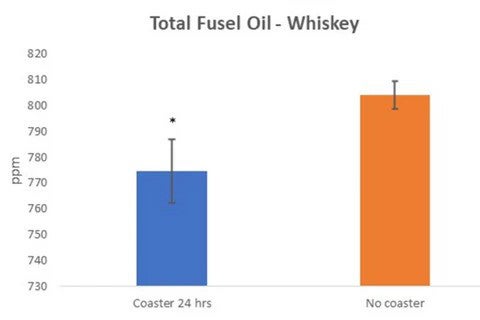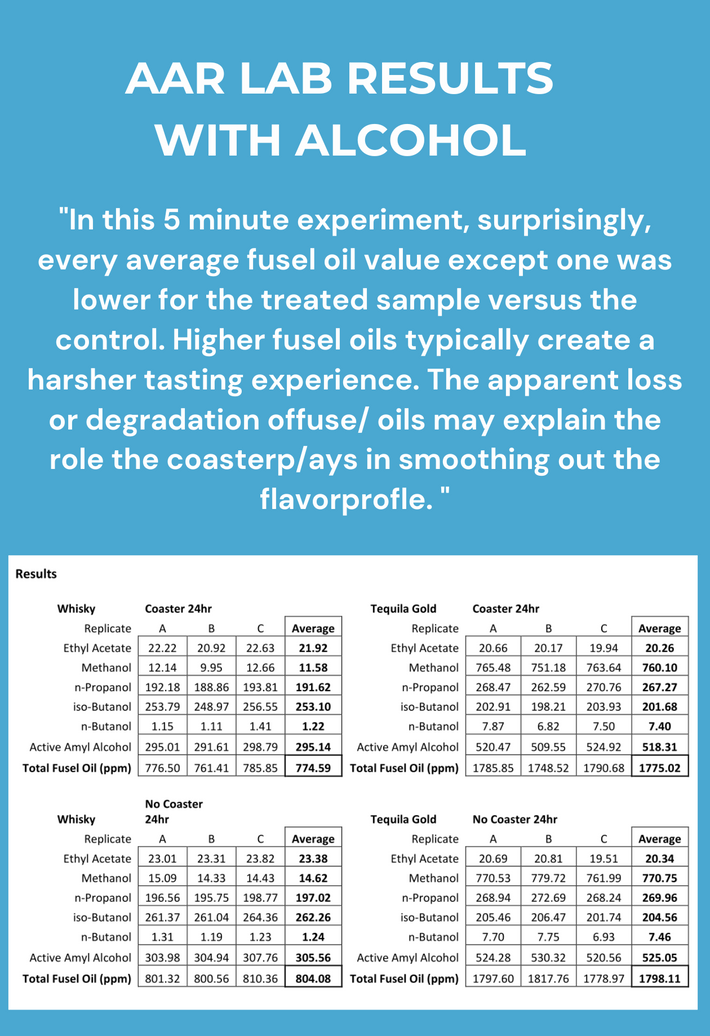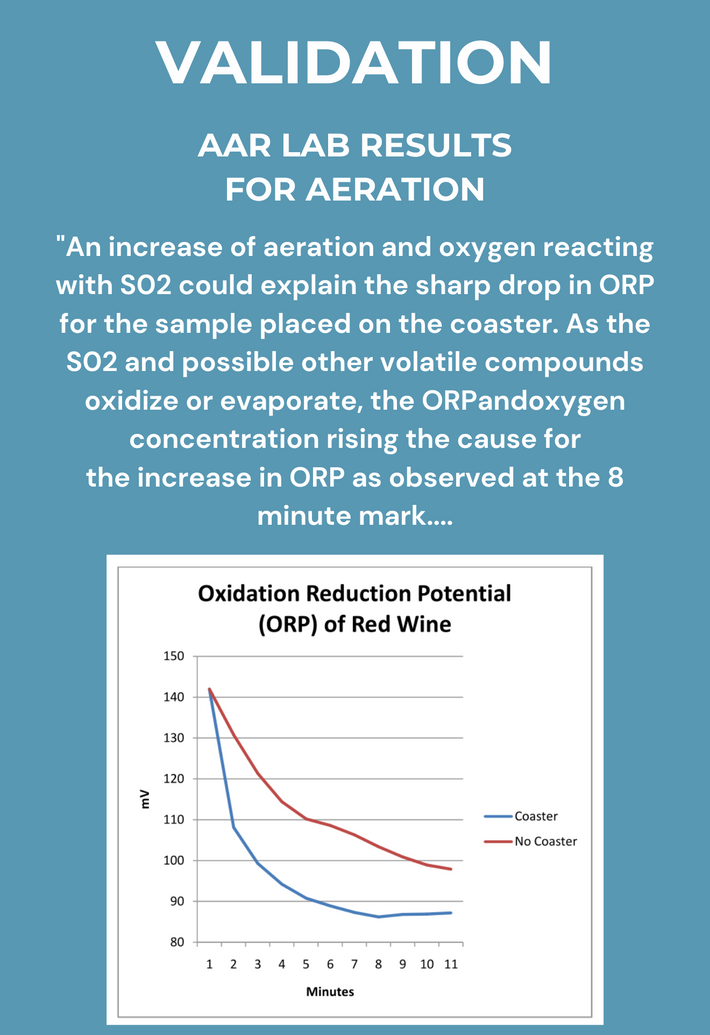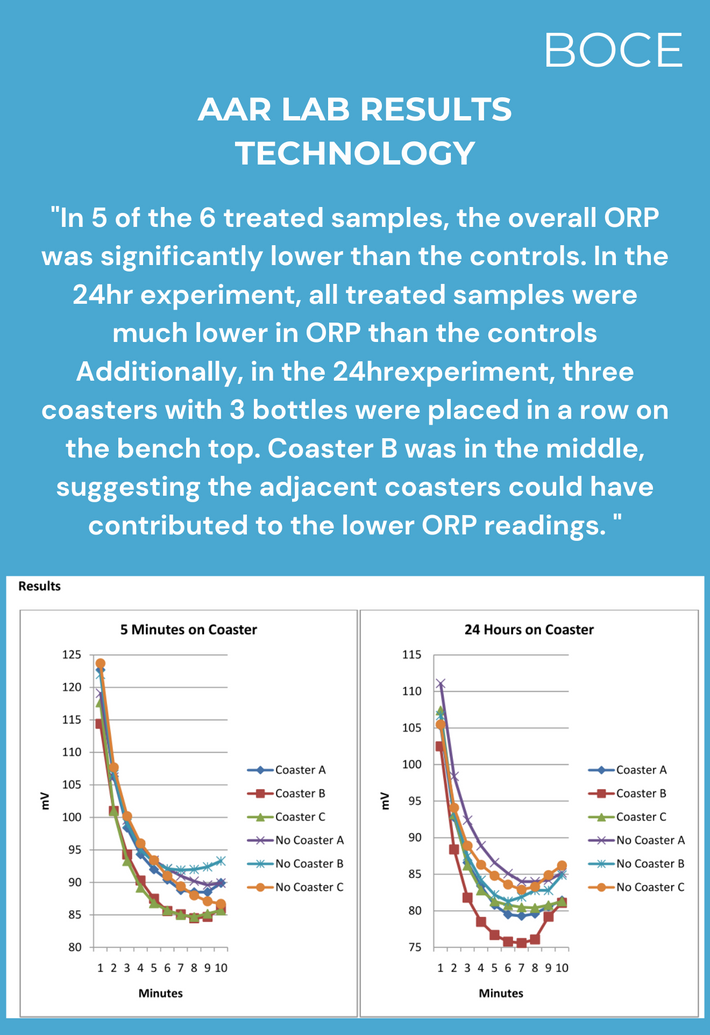Alexis Kaplan
University of Washington Seattle
Affiliate Associate Professor
Owner/Founder,
ATK Innovation, Analytics and Discovery
Small changes in the concentrations of compounds in beverages can have disproportionately large effects on flavor.
The sensation of taste or flavor of beverages is a synthesis of multiple senses (e.g., taste, smell, texture) corresponding to the chemical makeup of what is imbibed. Component chemicals in beverages interact with taste receptors in taste buds in the mouth and olfactory receptors in the membranes of nasal passages and olfactory lobe of the brain. More volatile ingredients are better able to reach the olfactory receptors located on cilia in the nasal mucosa where they can result in stimulation of nerve cells that carry signals to the olfactory lobe of the brain. While individual compounds may elicit a distinctive flavor sensation, the flavor of mixtures of compounds is much more complex. Therefore, slight changes in certain components can alter the perceived flavor in unpredictable ways. Without being bound by any particular theory, there are multiple mechanisms by which this can occur due to selective effects of component compounds at various levels in the process of olfaction. For instance, components can interact with each other while in solution to alter physical chemical properties such as volatility in addition to interacting at the level of olfactory receptors, mucosal membrane partitioning and at higher levels of processing in the olfactory lobe and other brain centers. The entire process results in a non-linear relationship between the concentration of component chemicals and the magnitude and quality of the perceived sensations.
Volatile compounds have a bigger impact on odor than non-volatile compounds.
The more volatile a compound, the greater the chance that molecules of that compound will make its way through the nasal passages to the nasal mucosa and interact with olfactory receptors. For this reason, volatile molecules like fusel oils, tend to have more impact on the odor component of flavor than non-volatile compounds.
Fusel oils are a class of compounds present in alcoholic beverages that are known to impact taste, flavor, and odor.
Fusel oils are a group of alcohols other than ethanol that are by-products of fermentation that are formed during the production of alcoholic beverages such as beer and wine. Fusel oils can become further concentrated during the distillation of spirits and can affect the taste, odor and texture of whiskey, tequila, and other distilled spirits. A typical panel for screening fusel oil content will measure methanol, amyl alcohol, butanol, iso-butanol, n-propanol, and ethyl acetate. For example, an abundant fusel oil, isoamyl alcohol, has a burning, biting taste. Therefore, changes in levels of fusel oils are relevant to the taste profile of an alcoholic beverage that are routinely monitored by vendors of alcoholic beverages.
EXAMPLE
Changes in Fusel oil content of whiskey and tequila following a 5 minute exposure to the Rainwater quantum coaster
An independent laboratory, AAR Labs, in Madison, Wisconsin tested the effect of Rainwater quantum coaster exposure on fusel oil content of whiskey and tequila samples using gas chromatography with a flame ionization detector following the Alcohol and Tobacco Tax and Trade Bureau (TTB) test method, SSD: TM:200 as described below.
Materials and Methods
The protocol for quantitation of fusel oils followed the TTB test method SSD:TM:200 "Capillary GC Analysis of Fusel Oils and Other Compounds of Interest"
Sample Treatment
In one experiment three vials of whisky and three vials of gold tequila were placed on the coaster for 24 hours. Similarly, in a separate experiment three vials of whisky and three vials of gold tequila were placed on the coaster for 5 min. In each experiment an equal number of control vials of each spirit were stored under the same conditions and were used as controls. Samples were analyzed in a serpentine order, switching back and forth between vials that were on the coaster and no coaster control.
Gas Chromatography
One (1) microliter aliquots of samples were injected via an HP 6890 Series Injector and sample tray Injector with a 5:1 Split at 220 degrees C over a DB-WAX column (30m x 0.530mm x 1.00 um film thickness) into an HP 5890 Series II GC. The initial temperature of 40 degrees Centigrade was held for 5 min prior to ramping at 10 degrees per minute to 215 degrees Centigrade, where it was held for 2.5 min. The entire runtime was 30 min for each sample. The effluent was monitored with an FID Detector at 250 degrees C. (Hydrogen 40mL/min, air flow 450mL/min). Data was analyzed using GC Solution v 2.3 software.
Results
As shown in Figures 1 – 7 and Tables 1 – 4, mean total fusel oil levels are reduced in both whiskey and tequila samples from vials placed on coasters for either 5 min or 24 hours compared to the control samples that were treated the same except for exposure to coasters. This difference is sharpest in whiskey samples from vials that had been on the coaster for 24 hours (Figure 1 and Table 1) where the component fusel oils such as active amyl alcohol, iso-butanol, n-propanol and methanol are all significantly lower according to the student’s unpaired, two tailed t-test.
Figures
The present invention may be understood more fully by the following figures.

Figure 1.
Description of the figures Figure 1
is a bar graph showing the effect of coaster use on the amount of fusel oil in whiskey samples set on coasters for 24 hours. The data represent the means +/- SD from one experiment in triplicate. Using an unpaired, two-tailed t test the results are statistically significant, *p=0.019.

Figure 2.
Figure 2 is a bar graph showing the effect of 24-hour coaster exposure on the amount of active amyl alcohol expressed as parts per million (ppm) in whiskey samples. The data represent means +/- SD from one experiment in triplicate. Using an unpaired, two-tailed t test the difference in the two means are statistically significant: p= 0.0116.

Figure 3.
Figure 3 is a bar graph showing the effect of 24-hour coaster exposure on the amount of Iso-butanol expressed as parts per million (ppm) in whiskey samples. The data represent means +/- SD from one experiment in triplicate. Using an unpaired, two-tailed t test the difference in the two means are statistically significant: p= 0.0197 .

Figure 4.
Figure 4 is a bar graph showing the effect of 24-hour coaster exposure on the amount of total fusel oil expressed as parts per million (ppm) in tequila samples. The data represent means +/- SD from one experiment in triplicate.

Figure 5.
Figure 5 is a bar graph showing the effect of 24-hour coaster exposure on the amount of active amyl alcohol expressed as parts per million (ppm) in tequila gold samples. The data represent means +/- SD from one experiment in triplicate.

Figure 6.
Figure 6 is a bar graph showing the effect of 24-hour coaster exposure on the amount of methanol expressed as parts per million (ppm) in tequila gold samples. The data represent means +/- SD from one experiment in triplicate.

Figure 7.
Figure 7 is a bar graph showing the effect of coaster use on the amount of fusel oil in whiskey samples set on coasters for 5 min. The data represent the means +/- SD from one experiment in triplicate.

Figure 8.
Figure 8 is a bar graph showing the effect of coaster use on the amount of fusel oil in tequila gold samples set on coasters for 5 min. The data represent the means +/- SD from one experiment in triplicate.

Students unpaired, two-tailed t test:
*p=0.0248, +p=0.2343
^p=0.0197,#p=0.0116
**p=0.019






Alexis Kaplan
University of Washington Seattle
Affiliate Associate Professor
Owner/Founder,
ATK Innovation, Analytics and Discovery
Small changes in the concentrations of compounds in beverages can have disproportionately large effects on flavor.
The sensation of taste or flavor of beverages is a synthesis of multiple senses (e.g., taste, smell, texture) corresponding to the chemical makeup of what is imbibed. Component chemicals in beverages interact with taste receptors in taste buds in the mouth and olfactory receptors in the membranes of nasal passages and olfactory lobe of the brain. More volatile ingredients are better able to reach the olfactory receptors located on cilia in the nasal mucosa where they can result in stimulation of nerve cells that carry signals to the olfactory lobe of the brain. While individual compounds may elicit a distinctive flavor sensation, the flavor of mixtures of compounds is much more complex. Therefore, slight changes in certain components can alter the perceived flavor in unpredictable ways. Without being bound by any particular theory, there are multiple mechanisms by which this can occur due to selective effects of component compounds at various levels in the process of olfaction. For instance, components can interact with each other while in solution to alter physical chemical properties such as volatility in addition to interacting at the level of olfactory receptors, mucosal membrane partitioning and at higher levels of processing in the olfactory lobe and other brain centers. The entire process results in a non-linear relationship between the concentration of component chemicals and the magnitude and quality of the perceived sensations.
Volatile compounds have a bigger impact on odor than non-volatile compounds.
The more volatile a compound, the greater the chance that molecules of that compound will make its way through the nasal passages to the nasal mucosa and interact with olfactory receptors. For this reason, volatile molecules like fusel oils, tend to have more impact on the odor component of flavor than non-volatile compounds.
Fusel oils are a class of compounds present in alcoholic beverages that are known to impact taste, flavor, and odor.
Fusel oils are a group of alcohols other than ethanol that are by-products of fermentation that are formed during the production of alcoholic beverages such as beer and wine. Fusel oils can become further concentrated during the distillation of spirits and can affect the taste, odor and texture of whiskey, tequila, and other distilled spirits. A typical panel for screening fusel oil content will measure methanol, amyl alcohol, butanol, iso-butanol, n-propanol, and ethyl acetate. For example, an abundant fusel oil, isoamyl alcohol, has a burning, biting taste. Therefore, changes in levels of fusel oils are relevant to the taste profile of an alcoholic beverage that are routinely monitored by vendors of alcoholic beverages.
EXAMPLE
Changes in Fusel oil content of whiskey and tequila following a 5 minute exposure to the Rainwater quantum coaster
An independent laboratory, AAR Labs, in Madison, Wisconsin tested the effect of Rainwater quantum coaster exposure on fusel oil content of whiskey and tequila samples using gas chromatography with a flame ionization detector following the Alcohol and Tobacco Tax and Trade Bureau (TTB) test method, SSD: TM:200 as described below.
Materials and Methods
The protocol for quantitation of fusel oils followed the TTB test method SSD:TM:200 "Capillary GC Analysis of Fusel Oils and Other Compounds of Interest"
Sample Treatment
In one experiment three vials of whisky and three vials of gold tequila were placed on the coaster for 24 hours. Similarly, in a separate experiment three vials of whisky and three vials of gold tequila were placed on the coaster for 5 min. In each experiment an equal number of control vials of each spirit were stored under the same conditions and were used as controls. Samples were analyzed in a serpentine order, switching back and forth between vials that were on the coaster and no coaster control.
Gas Chromatography
One (1) microliter aliquots of samples were injected via an HP 6890 Series Injector and sample tray Injector with a 5:1 Split at 220 degrees C over a DB-WAX column (30m x 0.530mm x 1.00 um film thickness) into an HP 5890 Series II GC. The initial temperature of 40 degrees Centigrade was held for 5 min prior to ramping at 10 degrees per minute to 215 degrees Centigrade, where it was held for 2.5 min. The entire runtime was 30 min for each sample. The effluent was monitored with an FID Detector at 250 degrees C. (Hydrogen 40mL/min, air flow 450mL/min). Data was analyzed using GC Solution v 2.3 software.
Results
As shown in Figures 1 – 7 and Tables 1 – 4, mean total fusel oil levels are reduced in both whiskey and tequila samples from vials placed on coasters for either 5 min or 24 hours compared to the control samples that were treated the same except for exposure to coasters. This difference is sharpest in whiskey samples from vials that had been on the coaster for 24 hours (Figure 1 and Table 1) where the component fusel oils such as active amyl alcohol, iso-butanol, n-propanol and methanol are all significantly lower according to the student’s unpaired, two tailed t-test.
Figures
The present invention may be understood more fully by the following figures.

Figure 1.
Description of the figures Figure 1
is a bar graph showing the effect of coaster use on the amount of fusel oil in whiskey samples set on coasters for 24 hours. The data represent the means +/- SD from one experiment in triplicate. Using an unpaired, two-tailed t test the results are statistically significant, *p=0.019.

Figure 2.
Figure 2 is a bar graph showing the effect of 24-hour coaster exposure on the amount of active amyl alcohol expressed as parts per million (ppm) in whiskey samples. The data represent means +/- SD from one experiment in triplicate. Using an unpaired, two-tailed t test the difference in the two means are statistically significant: p= 0.0116.

Figure 3.
Figure 3 is a bar graph showing the effect of 24-hour coaster exposure on the amount of Iso-butanol expressed as parts per million (ppm) in whiskey samples. The data represent means +/- SD from one experiment in triplicate. Using an unpaired, two-tailed t test the difference in the two means are statistically significant: p= 0.0197 .

Figure 4.
Figure 4 is a bar graph showing the effect of 24-hour coaster exposure on the amount of total fusel oil expressed as parts per million (ppm) in tequila samples. The data represent means +/- SD from one experiment in triplicate.

Figure 5.
Figure 5 is a bar graph showing the effect of 24-hour coaster exposure on the amount of active amyl alcohol expressed as parts per million (ppm) in tequila gold samples. The data represent means +/- SD from one experiment in triplicate.

Figure 6.
Figure 6 is a bar graph showing the effect of 24-hour coaster exposure on the amount of methanol expressed as parts per million (ppm) in tequila gold samples. The data represent means +/- SD from one experiment in triplicate.

Figure 7.
Figure 7 is a bar graph showing the effect of coaster use on the amount of fusel oil in whiskey samples set on coasters for 5 min. The data represent the means +/- SD from one experiment in triplicate.

Figure 8.
Figure 8 is a bar graph showing the effect of coaster use on the amount of fusel oil in tequila gold samples set on coasters for 5 min. The data represent the means +/- SD from one experiment in triplicate.

Students unpaired, two-tailed t test:
*p=0.0248, +p=0.2343
^p=0.0197,#p=0.0116
**p=0.019






Join the Party
© 2024, Shop BOĆE
Join the Party
© 2024, Shop BOĆE